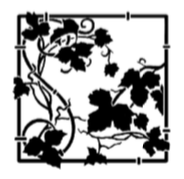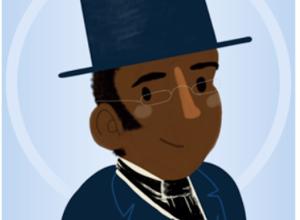Swann Announces Vintage Writing Instruments Dept
 Graham Green said, "Some authors type their works, but I cannot do that. Writing is tied up with the hand, almost with a special nerve." You might argue that this is due to a deep, evolutionary need to see our abstract thoughts safely into the concrete world. Some call it a phenomenology of the hand. It might just be an even more basic need to reach for the shiny thing and to do something with it, like make a mark.
The writing tools themselves add something to the relationship between mind and paper. Plath used a Schaeffer fountain pen, Nabokov a Montblanc (when he wasn't using pencil), Mark Twain a Conklin. Hemingway is connected with Montegrappa, Montblanc, Esterbrook, though he preferred pencil, and his weapon of choice is still debated by enthusiasts:
Graham Green said, "Some authors type their works, but I cannot do that. Writing is tied up with the hand, almost with a special nerve." You might argue that this is due to a deep, evolutionary need to see our abstract thoughts safely into the concrete world. Some call it a phenomenology of the hand. It might just be an even more basic need to reach for the shiny thing and to do something with it, like make a mark.
The writing tools themselves add something to the relationship between mind and paper. Plath used a Schaeffer fountain pen, Nabokov a Montblanc (when he wasn't using pencil), Mark Twain a Conklin. Hemingway is connected with Montegrappa, Montblanc, Esterbrook, though he preferred pencil, and his weapon of choice is still debated by enthusiasts:

 Rick was kind enough to agree to an interview, with a sneak peak, into some of the fountain pens Swann will be offering this autumn:
Rick was kind enough to agree to an interview, with a sneak peak, into some of the fountain pens Swann will be offering this autumn:BP: How did you become interested in vintage writing instruments?
BP: What are the origins of the Fine and Vintage Writing Instruments Department at Swann?
RP: For almost twenty years, George Lowry, chairman of Swann, has dreamed of establishing a fine and vintage writing instruments department as part of Swann Auction Galleries. As the company has grown and expanded, it seems that the right opportunity never presented itself. Last October I showed up, and through a series of discussions we decided that I would be the right person to finally help George and Nicholas Lowry, who is now President of the firm, achieve this goal.
BP: What varieties of 'instruments' will you be dealing in?
RP: We plan to offer any writing instruments that we think will be in accord with the tastes of our rather sophisticated clientele. Right now that translates out mostly to fountain pens as well as sets comprising fountain pens and mechanical pencils. Most, but not all, of what we will be offering in our fall sale will be vintage. In the future we may very well expand to fine inkwells, blotters, and dip pens. Stay tuned. Some of the highlights of the fall sale will include the finest selection of vintage Chilton pens ever offered, a very fine collection of vintage Montblancs, including some rarely seen colored celluloid and gold filled models, some extraordinary vintage Aurora and OMAS pens, including Asterope and Etiopia models from Aurora, and lots of others.
BP: For new collectors, where is the best place to begin collecting? What are the qualities you look for in writing instruments? How much of a role does functionality play in value? How important is provenance?
RP: I always tell new collectors to collect what they like, to look for the best quality they can afford and to buy books, that is pen books. Fine pens come from most of the industrialized world including Parker and Waterman in the US; Aurora, Montblanc, OMAS and Pelikan in the EU, Namiki in Japan, just to name a few. What one looks for in pens is in some ways subjective. Often it is exclusivity: the fewer examples, the greater the panache. But quality and integrity count for a lot, too--a pen that is well made, well designed, has a good company behind it. Most collectors of vintage pens do want them to be functional, the exception being very rare, fragile pens which might be significantly degraded by further use. As a rule, provenance counts little, if at all.
BP: What do you consider some of the staples of a great collection?
RP: That really varies with the nature of the collection. In a collection of modern limited editions I would look for the most uncommon examples, but at the same time theme and coherence count. I like to be able to tell something about the tastes and values of someone from her/his collection. In vintage collections, I also look for theme. I greatly admire the collector who is entrusting his Chiltons to us for the fall sale. He decided to collect and then went out and single handedly assembled the best collection of that brand in the world. The other major collection we will be selling has its own attraction, this fellow sought out the very best examples he could find across a wide variety of makers and brands. This collector has an eye for quality and let others guide him toward the best of the best. I think the key to a successful collection is to know what you want to do and do it, whether you are collecting Esterbrook school pens or Montblanc Patron of the Arts models.
BP: On a more personal note: What are some of your favorite writing instruments? Do you use different ones for difference occasions and if so what are they and when?
RP: Ohhh, too many to list, but among the favorites would have to be a Pelikan 75th Anniversary model, only 75 of those were made in 2004. My collection of Pelikan 100 and 100N models in tortoise and Pelikan 100s in colored celluloids are another favorite. I was most pleased to recently acquire a very early edition solid gold Montblanc 144 set. I'm proud of a complete run of Pelikan Toledos. Contrary to what I said about provenance, I tend to like pens whose origins I know. I treasure a pristine Parker 51 Empire State set that was given to Frederick Bartman upon his retirement from the Globe Ticket Company of San Francisco.
BP: On a more whimsical note: Can you offer any philosophical insight on the personality of beautiful pens? Free-associate personality from the following: Aurora, Michel Perchin, Pelikan, Mont Blanc.
RP: Pens do have personality. Auroras are sweet pens, always willing to serve, anxious to be of interest. The offerings of Michel Perchin demand to be taken seriously, they dress well even outside the corporate boardroom. Pelikans? Pelikans are my favorites, among modern and vintage. I compare them to BMWs. The vintage Pelikans are like the BMW 328 of the 1930s or the 507 of the 1950s. The moderns compare to the modern cars for offering litheness, performance and quality. Montblancs, old and new, are like Mercedes, solid.

















